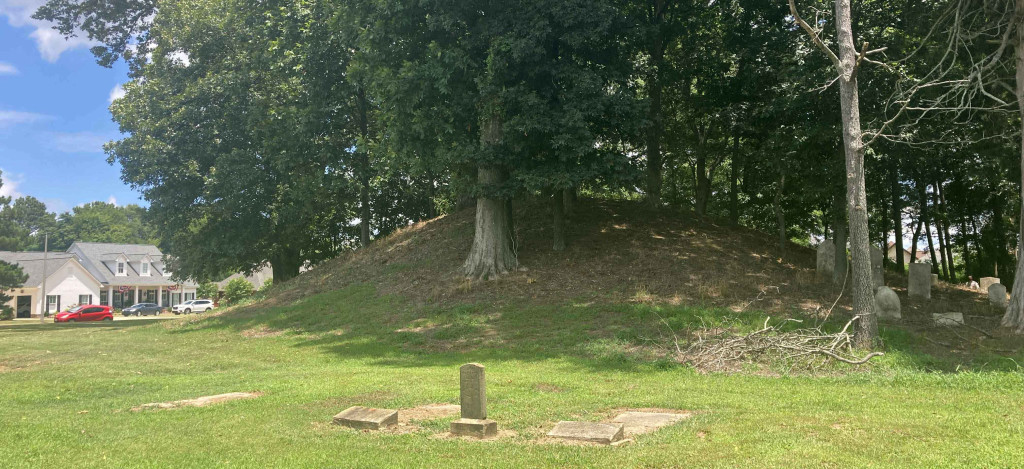The Archaeological Conservancy has acquired the Mound Cemetery Mound archaeological site, a significant site located in Monroe County outside of Tupelo, Mississippi. The 1.5-acre site was generously donated to the Conservancy by Malcolm Glenn of Glenn Farms. We are grateful for the care the Glenn Family has taken of this important site and thankful that the Conservancy was chosen to continue to preserve and protect it.
The Mound Cemetery Mound site, a twenty-foot high conical mound with a small historic cemetery at its base, was placed on the National Register of Historic Places in 1975, and a historical marker was erected by the Mississippi Department of Archives and History in 1997. The mound was built during the Miller II phase (A.D. 1 – 300) of the Middle Woodland period. This time period in Mississippi lasted from 200 B.C. to A.D. 400, and it’s generally characterized by an increase in sedentary lifeways, elaborately decorated pottery, and long-distance trade. Very few archaeological investigations have taken place at the site, but it appears to be in excellent condition and has little evidence of looting or other major disturbance.
The historic Nabers Mound Cemetery that surrounds the base of the mound is one of the oldest in the area. The earliest recorded burial took place in 1846. The cemetery began as a burial place for some of the earliest settlers of Monroe County and was eventually used as a potter’s field.
Nikki Mattson, the Conservancy’s Southeastern Field Representative, stated, “It’s been an honor working with Mr. Glenn to ensure the continued protection and preservation of this important site. I’ve really enjoyed spending time getting to know the area, its history, and the local community. Sites like these can teach us so much about the people, both prehistorically and historically, who influenced the landscape and foundation of the world we live in today.”
Mound Cemetery Mound is in a historically rich area of Mississippi that includes the Chickasaw Nation homeland and other significant archaeological sites. Preservation of the site will contribute to public knowledge about the site’s significance and the importance of cultural resource preservation. The preserve will be maintained as an open-space research preserve and protected against any future development.





